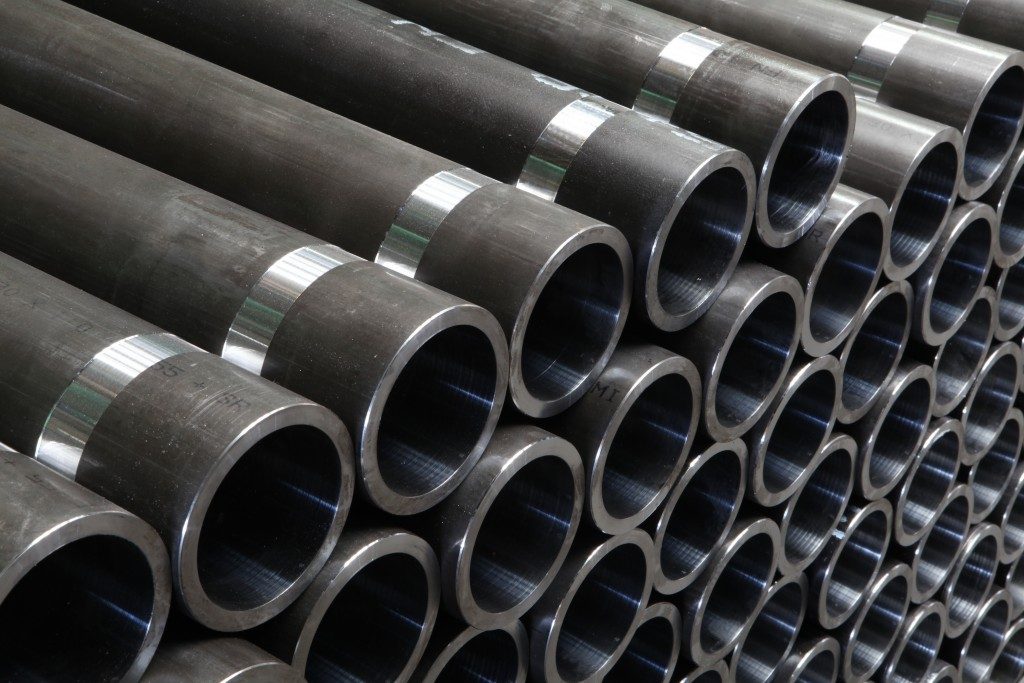Buildings may come in unique designs but one thing that all buildings share in common is that they are constructed with piping systems. An integral component in any building construction, not only do piping systems supply water throughout the entire building, but they are also used for drainage and waste disposal. Pipes are made from different materials, each with their own features and capabilities. The following are some of the most common pipes used in building construction.
Cast Iron Pipes
Cast iron pipes are widely used in water distribution systems because they are highly durable, resistant to corrosion, and more affordable than other piping materials. However, no matter how strong cast iron pipes are, factors like moisture or tree roots may affect longevity and result in rust, cracks, discoloration, or leakage. This is why regular inspection and maintenance is still needed to ensure that cast iron pipes will be able to last a lifetime.
Steel Pipes
Steel pipes are an ideal choice for high-pressure water systems or when large diameter pipes are required. They are stronger and more lightweight compared to cast iron pipes. In addition to construction and building projects, steel pipes are also used for foundation piling, guard rails, or scaffolding poles.
Carbon Steel
Because carbon steel pipes possess high strength and durability, they can be used in a wide variety of industrial applications. In addition to building construction, carbon steel pipes are popular in shipbuilding and geothermal and electric power plants.
Galvanized Iron (GI) Pipes
Galvanized iron pipes are ideal for transporting or supplying gas. Nowadays, GI pipes are seldom used in plumbing because even if they are extremely durable, GI pipes corrode easily, may block water flow or contaminate the water supply with lead.
Copper Pipes
In addition to water supply and distribution systems, copper pipes are also used in refrigerant for heating, ventilation, and air conditioning (HVAC) lines. Copper pipes can be made from either soft or rigid copper. They are heat and corrosion resistant and have high tensile strength. Copper pipes can be bent easily which makes them easier to fit into corners.

Polyvinyl Chloride (PVC) Pipes
Polyvinyl chloride pipes are increasingly used in hot or cold water supply systems for both indoor and outdoor systems because they are lightweight and non-corrosive. Three types of PVC are available in the market.
- Unplasticized PVC (UPVC) or rigid pipes used for cold water systems
- Plasticized PVC (PVPC) pipes with addition of rubber; can withstand lower working temperatures compared to UPVC pipes
- Chlorinated PVC (CPVC) used for high temperatures
Asbestos Cement (AC) Pipes
Asbestos cement (AC) pipes are typically used for draining rainwater for roofs, soil, and waste. They can also be used for ventilation.
PEX Pipes
Cross-linked polyethylene or PEX pipes are rigid enough to withstand high water pressure but they are also flexible, bending up to an angle of 90 degrees. This allows them to easily fit into walls, ceilings, and crawlspaces.
ABS Pipes
Acrylonitrile butadiene styrene (ABS) pipes are similar to PVC pipes in appearance except that they are stronger. ABS pipes work well in cold temperatures and are also suitable for underground exterior use.
With many options available, it may be hard to determine which types of piping will be suitable for a building or home construction. Enlisting the assistance of an expert helps in decision-making.

